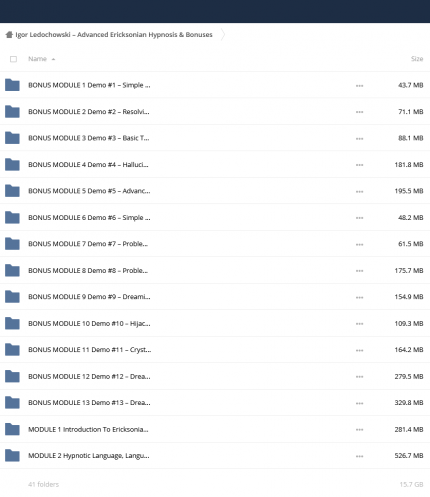
Udemy – The Advanced Technical Analysis Trading Course (New 2019)
Salepage : Udemy – The Advanced Technical Analysis Trading Course (New 2019)
Archive : Udemy – The Advanced Technical Analysis Trading Course (New 2019)
FileSize :
Description
Course Introduction :
Course Introduction
[Important] Before we start!
How to Use Support & Resistance Indicators :
How to Perform Multiple Time-Frame Analysis The Right Way + Examples
How to Trade Horizontal Support & Resistance + Examples
How to Trade Parallel Channels + Examples
How to Trade Fibonacci & Fibonacci Extensions + Examples
How to Use Trend Analysis Indicators :
How to Trade Elliot Waves + Examples
How to Trade Exponential Moving Averages (EMA) + Examples
How to Trade Moving Average Convergence Divergence (MACD) + Examples
How to Trade Know Sure Thing Oscillator (KST) + Examples
How to Trade Parabolic Stop and Reverse (Parabolic SAR) + Examples
How to Trade Average Directional Index (ADX) + Examples
How to Use Volatility Indicators :
How to Trade Bollinger Bands (BB) + Examples
How to Trade Keltner Channels (KC) + Examples
How to Trade Donchian Channels (DC) + Examples
How to Trade Average True Range (ATR) + Examples
How to Trade Relative Volatility Index (RVI) + Examples
How to Use Momentum Indicators :
How to Trade Momentum Oscillator (MO) + Examples
How to Trade Relative Strength Index (RSI) + Examples
How to Trade Stochastic Oscillator (SO) and Stochatic RSI (Stoch RSI) + Examples
How to Trade Commodity Channel Index (CCI) + Examples
How to Use Volume Indicators :
How to Trade On Balance Volume (OBV) + Examples
How to Trade Chaikin Money Flow (CMF) + Examples
How to Trade Money Flow Index (MFI) + Examples
Conclusion :
Thank You!
Express Your Thoughts!
Bonus: Your Next Steps – Upgrade Your Knowledge!
BONUS SECTION – Value Investing Fundamentals
Introduction :
What is Value Investing?
3 Real-World Steps to Implement the Value Investing Strategy
Price Is What You Pay, Value Is What You Get
Understanding Margin of Safety
Principle 1: Understand What You Are Doing
Principle 2: Invest in a Cash Rich Business
Principle 3: Seek Out Businesses with Low Debt
Principle 4: Rely on High-Quality Management
Principle 5: Avoiding Losses is The First Priority
Principle 6: Invest for the Long-Term
Principle 7: Know When to Sell Your Stocks
What is an Economic Moat?
Why a Company’s Economic Moat is So Important
The Advantage of Lower Cost
The Advantage of Greater Size
The Possession of Unique Assets
The Benefits of the Network Effect
The Ability to Command High Switching Costs
Your Next Steps
BONUS SECTION – Technical Analysis Fundamentals
Introduction :
How to Read a Stock Chart
How to Use Support & Resistance
How to Use Exponential Moving Averages (EMA)
How to Use Moving Average Convergence Divergence (MACD)
How to Use Relative Strength Index (RSI)
Reversal Patterns: Double Tops and Bottoms
Reversal Patterns: Head and Shoulders
Continuation Patterns: Triangles, Flags and Pennants
Processing..
Continuation Patterns: Cup and Handle
Final Words
BONUS SECTION – 3 FREE Training Sessions For Passionate Investors!
Session 1: How to Easily Grow Your Income by 10.89% Every Year :
Session 2: How to Instantly Build 4 New Streams of Passive Income
Session 3: How to Easily Boost Your Return to 20.31% or More!
What is forex trading?
Forex, or foreign exchange, can be explained as a network of buyers and sellers, who transfer currency between each other at an agreed price. It is the means by which individuals, companies and central banks convert one currency into another – if you have ever travelled abroad, then it is likely you have made a forex transaction.
While a lot of foreign exchange is done for practical purposes, the vast majority of currency conversion is undertaken with the aim of earning a profit. The amount of currency converted every day can make price movements of some currencies extremely volatile. It is this volatility that can make forex so attractive to traders: bringing about a greater chance of high profits, while also increasing the risk.




































Reviews
There are no reviews yet.